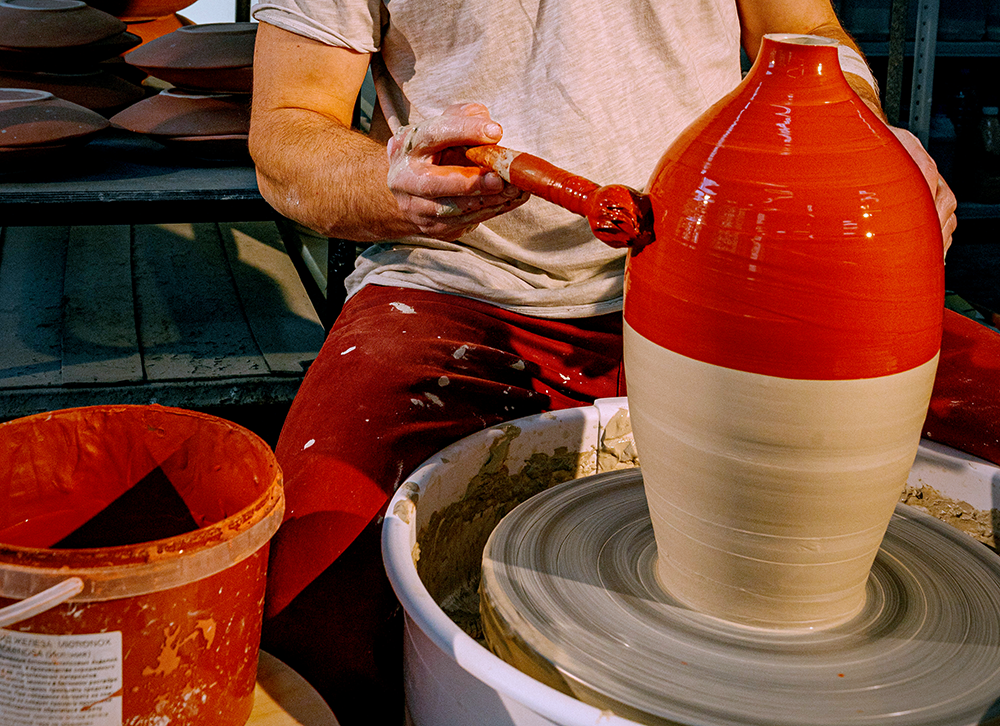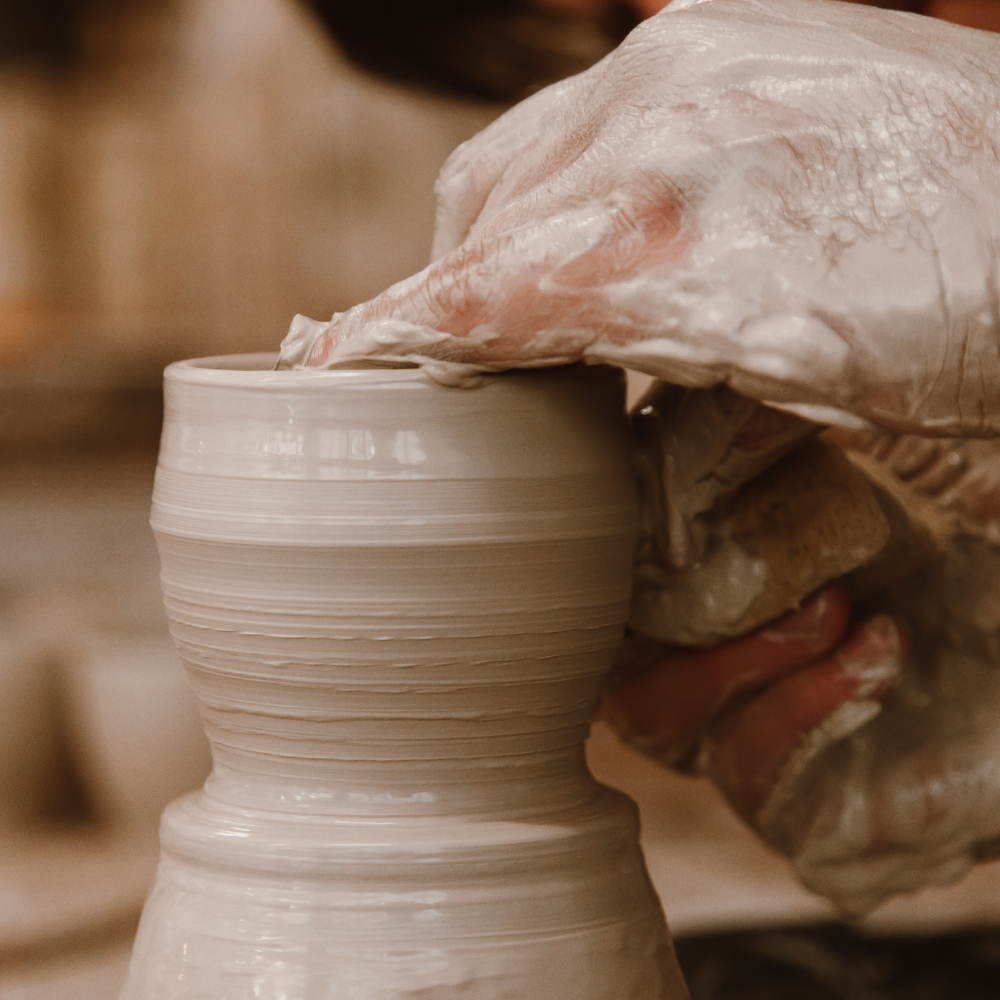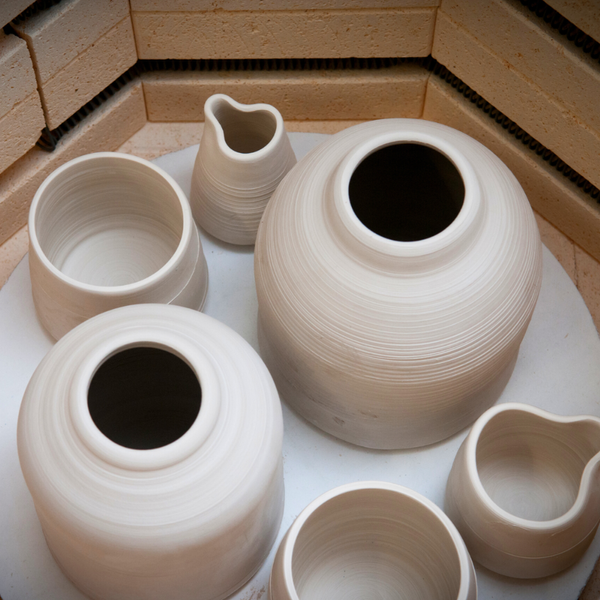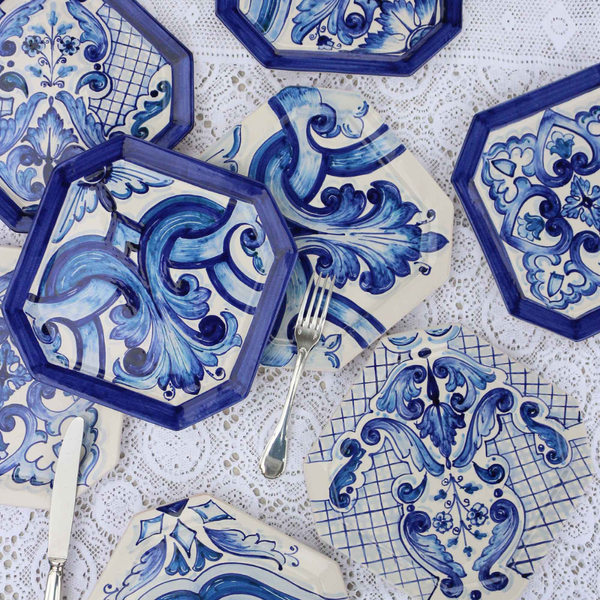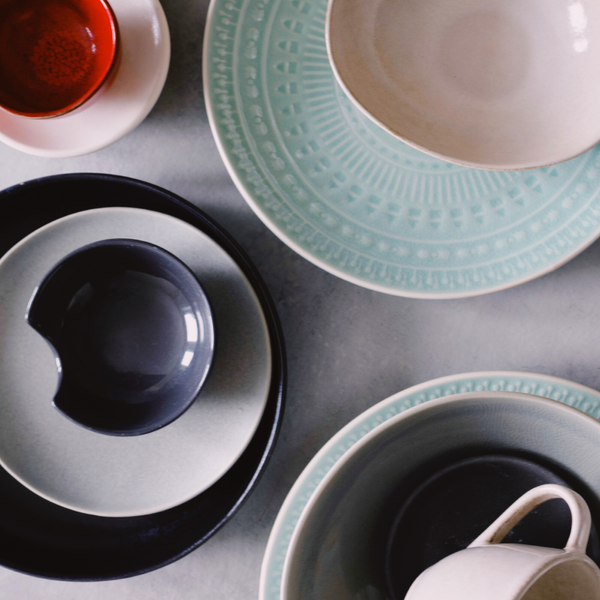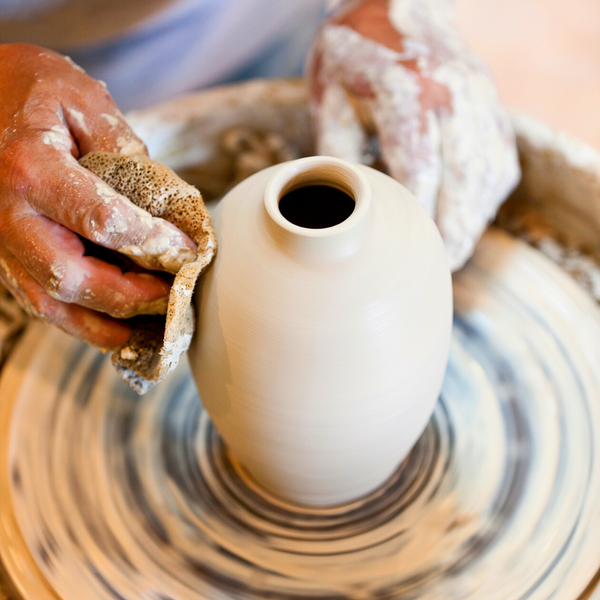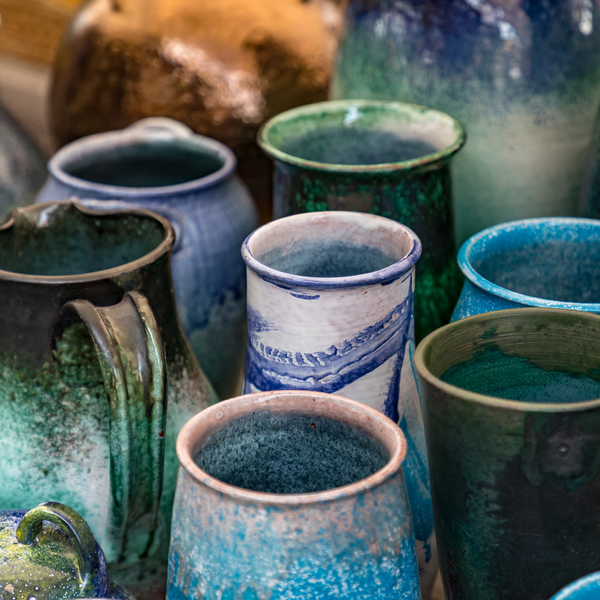Pottery, an art form as old as civilization itself, has been shaping human history for millennia.
From primitive clay vessels to intricate ceramic masterpieces, pottery has undergone a remarkable evolution.
But what exactly qualifies as pottery?
At its essence, pottery encompasses objects crafted from clay, molded into shape, and solidified through the transformative power of heat.
This expansive definition includes a diverse array of ceramic materials such as earthenware, stoneware, and porcelain.
Dive in as we unravel the fascinating world of pottery and discover what truly defines this timeless craft.
Key Takeaways:
- Pottery encompasses a wide range of ceramic materials, including earthenware, stoneware, and porcelain.
- The process of pottery making involves various techniques such as wheel throwing, hand-building, and glazing.
- Pottery has both functional and decorative uses, with a rich history dating back to ancient civilizations.
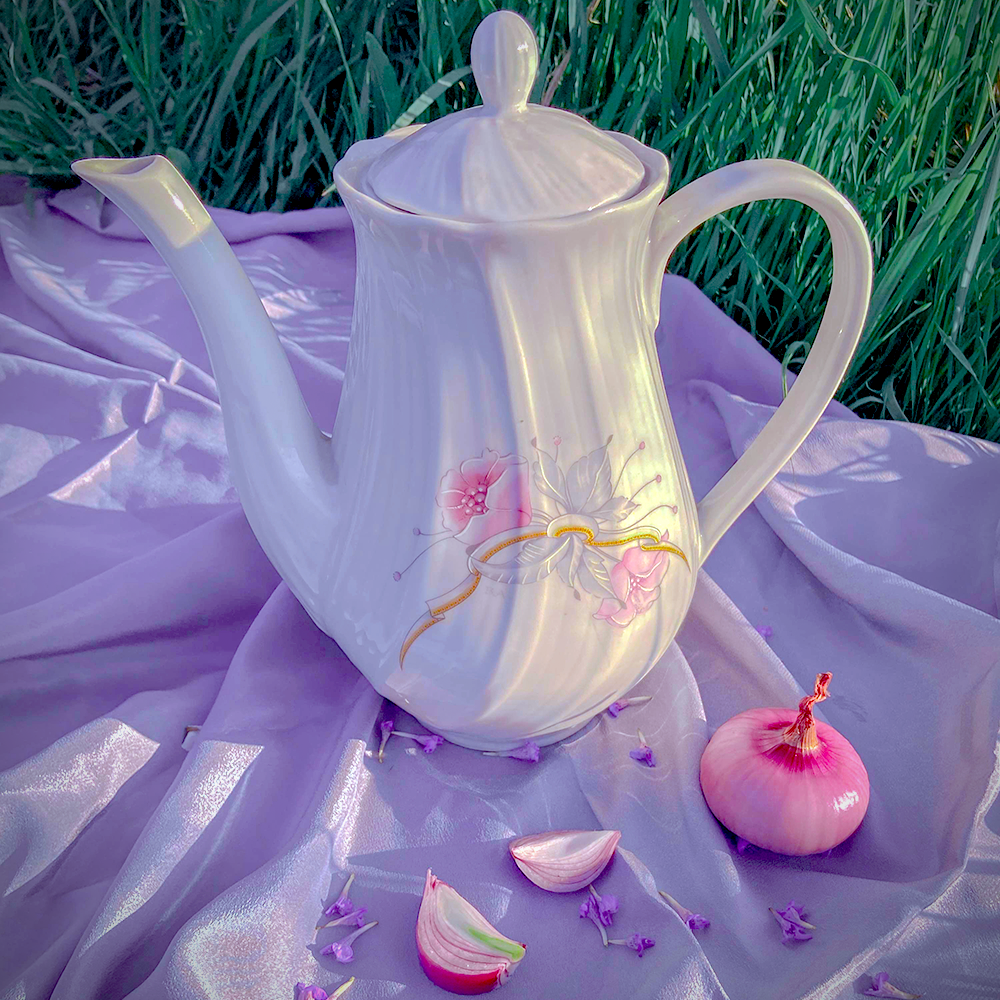
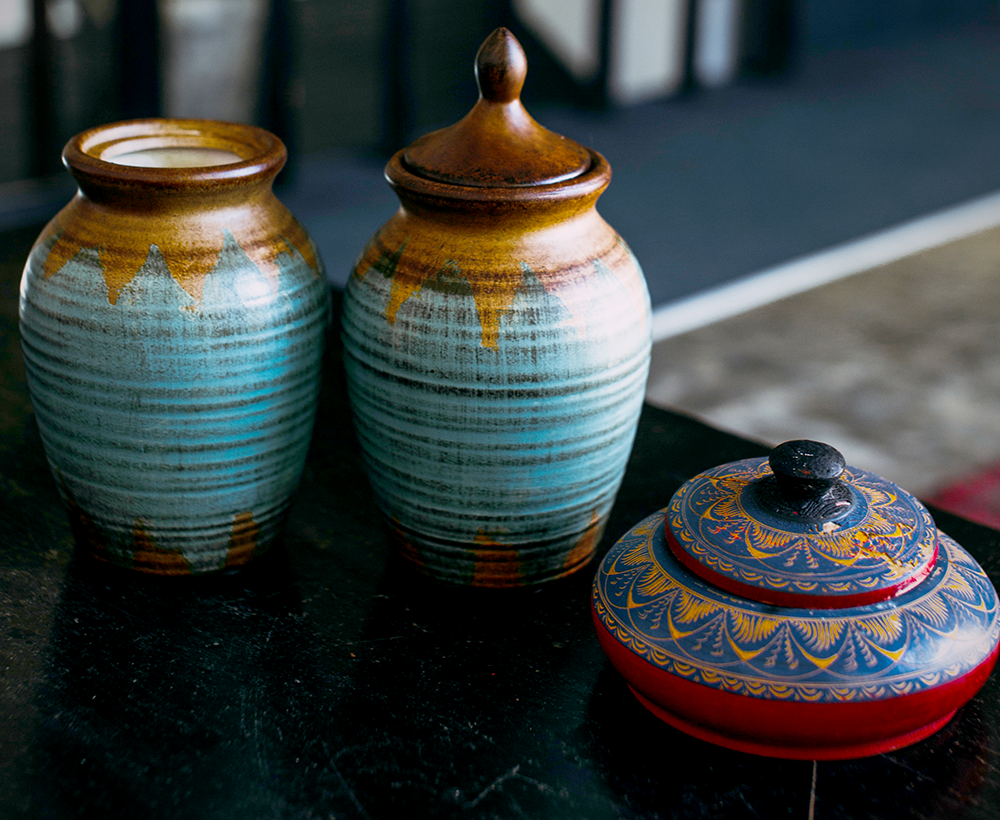
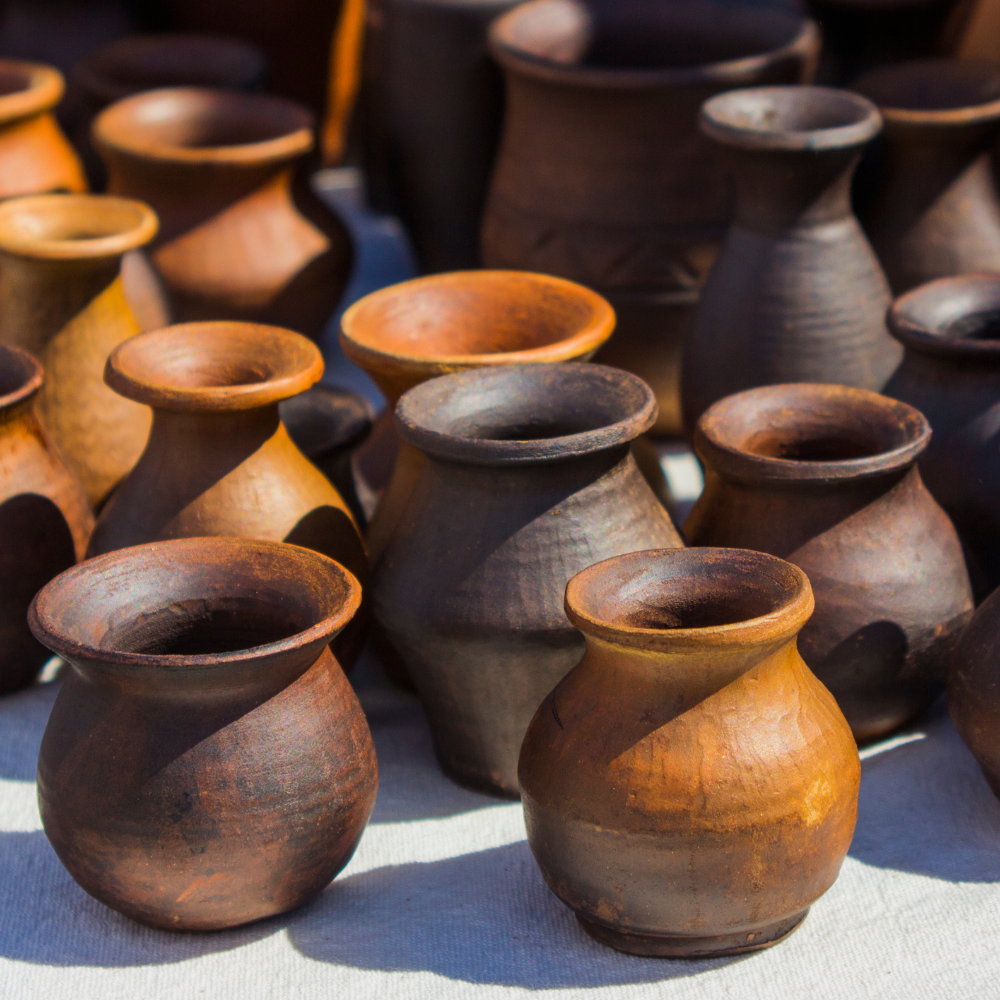
The History of Pottery
The history of pottery is as old as human civilization itself.
Archaeological evidence suggests that the earliest forms of pottery date back to around 29,000 BCE.
These early pieces were primarily functional, used for storing food and water.
Over time, pottery evolved to include decorative pieces, reflecting the cultural and artistic advancements of various civilizations.
Types of Pottery
Pottery is a fascinating world where art meets functionality, and each type of pottery offers its own unique charm and characteristics.
Whether you're a pottery enthusiast or just curious about this timeless craft, understanding the different types of clay and pottery can deepen your appreciation for this ancient art form.
Let's explore the captivating world of clay!
Earthenware
Earthenware is one of the oldest types of pottery. Made from a clay body that is fired at low temperatures, earthenware is slightly porous and often requires a glaze material to make it non-porous. It is commonly used for making bowls, plates, and decorative pieces.
Stoneware
Stoneware is a more durable type of pottery, fired at higher temperatures than earthenware. This makes it non-porous and suitable for both functional and decorative uses. Stoneware is often used for making dishes, pots, and other objects that need to withstand daily use.
Porcelain
Porcelain, also known as fine china, is a type of pottery made from a refined clay body that includes kaolin. It is fired at very high temperatures, resulting in a translucent white ceramic that is both strong and delicate. Chinese porcelain, particularly from the Ming Dynasty, is highly prized for its beauty and craftsmanship.
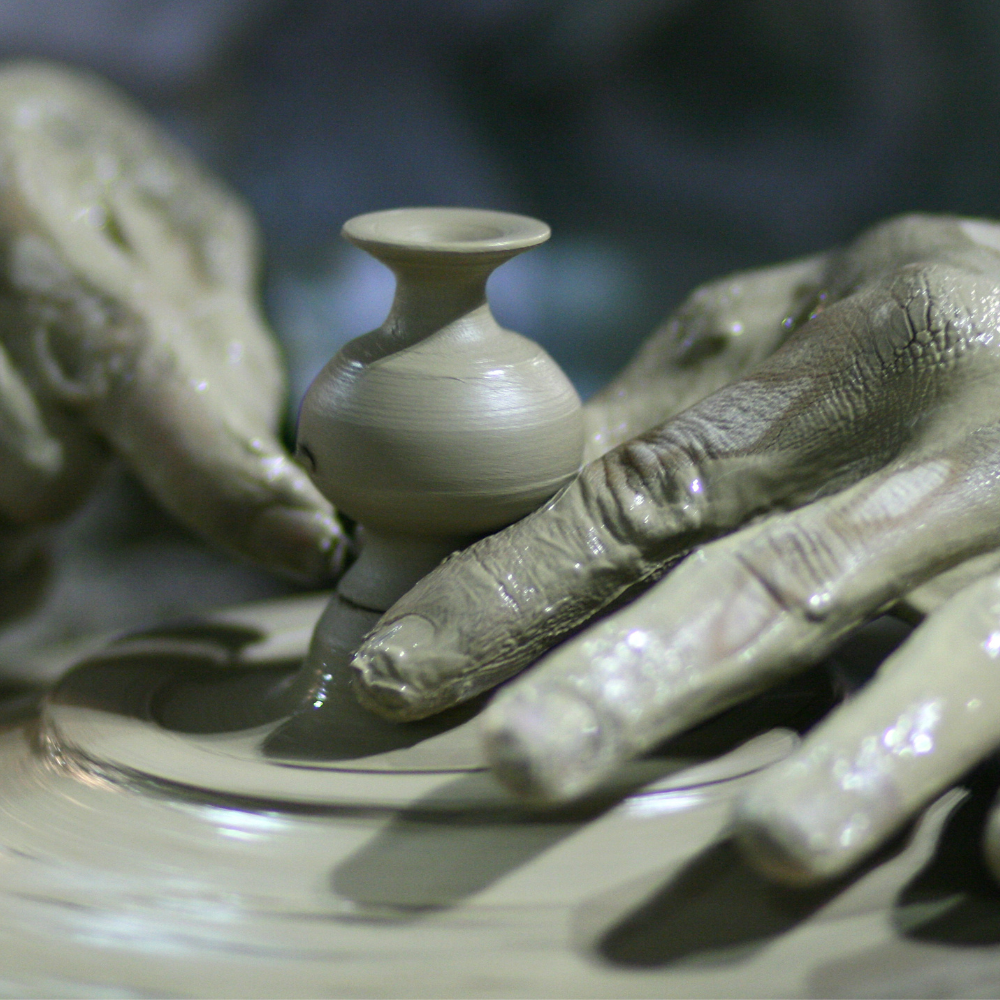
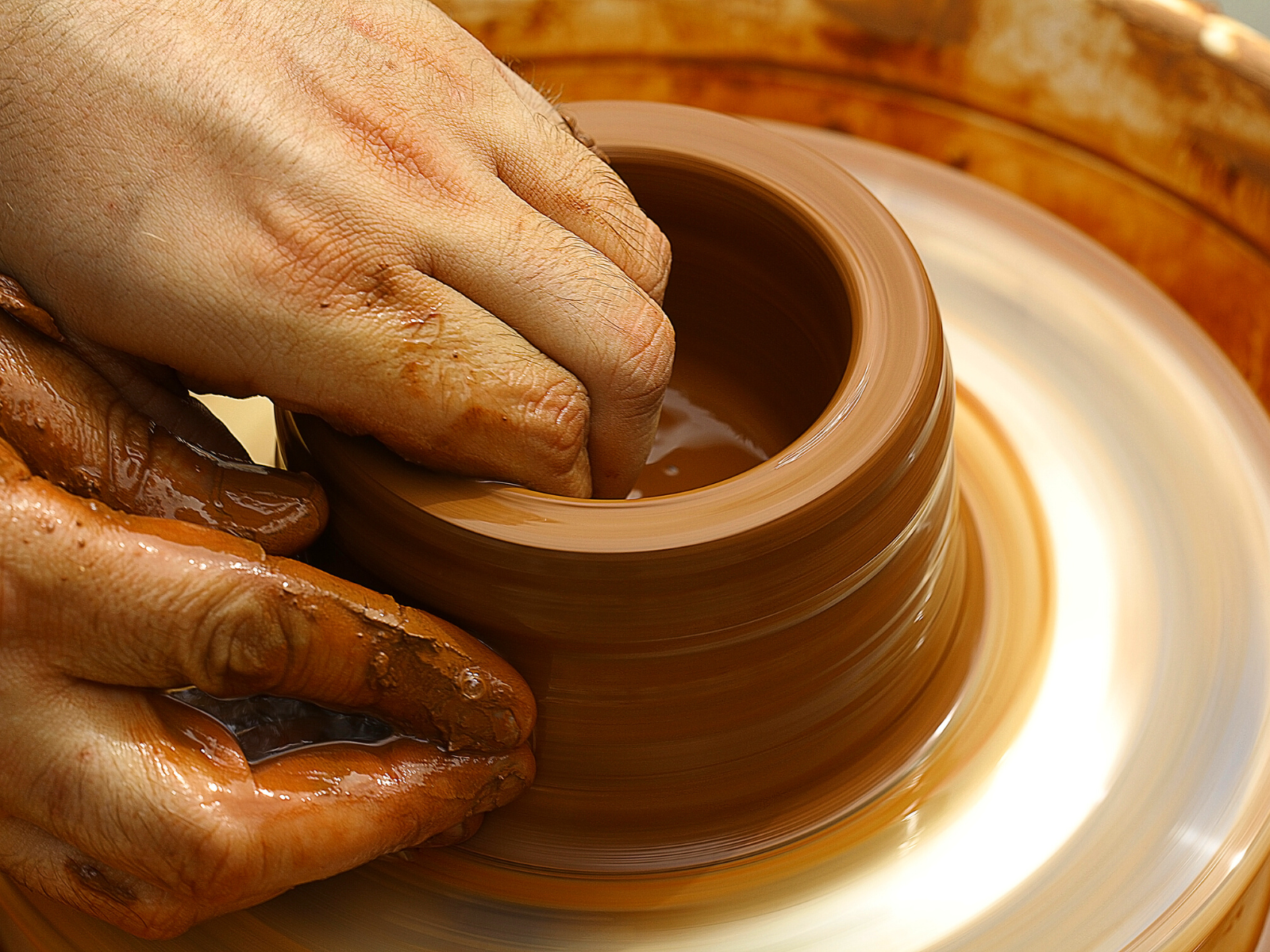
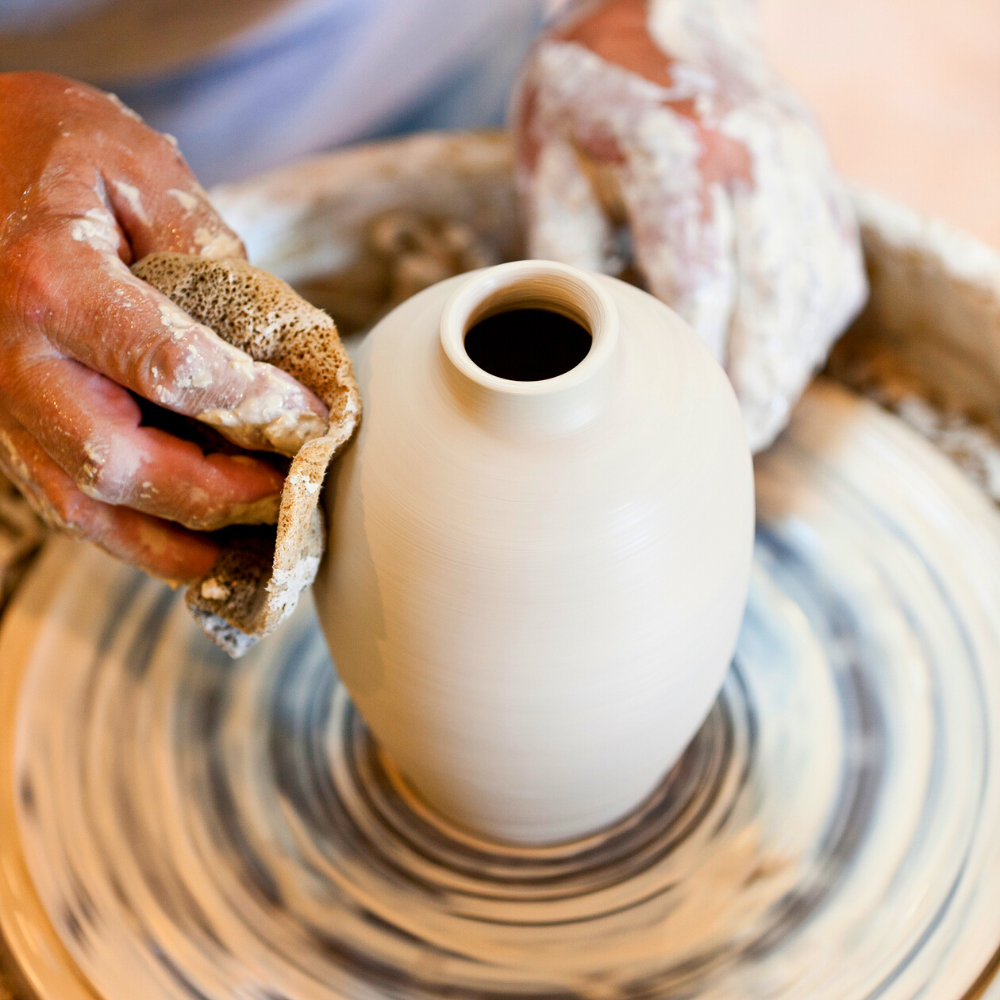
Pottery Making Techniques
Pottery making is an enchanting blend of creativity, skill, and tradition.
Whether you're a seasoned potter or a curious beginner, the techniques used in pottery can open up a world of artistic possibilities.
Dive into the mesmerizing techniques of pottery!
Wheel Throwing
Wheel throwing is one of the most iconic pottery techniques. Using a potter's wheel, the clay is shaped into various forms by hand. The wheel head is spun either by foot power or an electric motor, allowing the potter to create symmetrical pieces like bowls and pots.
Hand-Building
Hand-building is another popular method in pottery production. This technique involves shaping the clay by hand, using methods like coiling, pinching, and slab building. Hand-building allows for more creative freedom and is often used by studio potters to create unique art pieces.
The Firing Process
The firing process is crucial in pottery making.
It involves heating the shaped clay to high temperatures to permanently harden it.
There are different methods of firing, including kiln firing and pit firing.
The choice of method depends on the type of clay and the desired finish of the final product.
Glazing and Finishing
Glazing is an essential step in pottery production.
A glaze material is applied to the surface of the pottery to create a smooth, often glossy finish.
This not only enhances the appearance but also makes the pottery non-porous and more durable.
The ceramic glaze can be colored or clear, depending on the potter's personal preference.

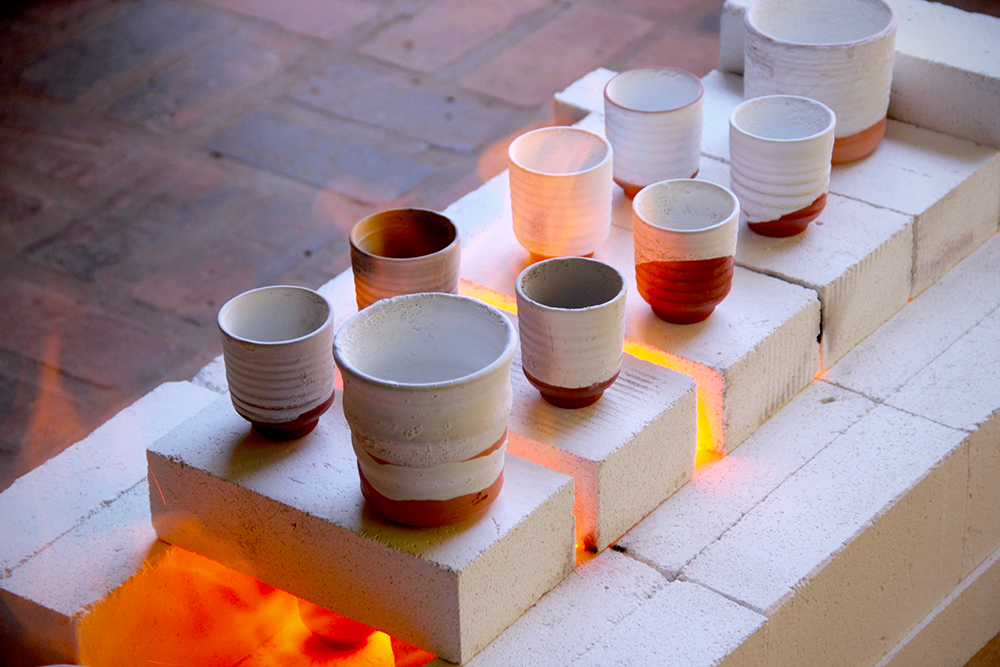
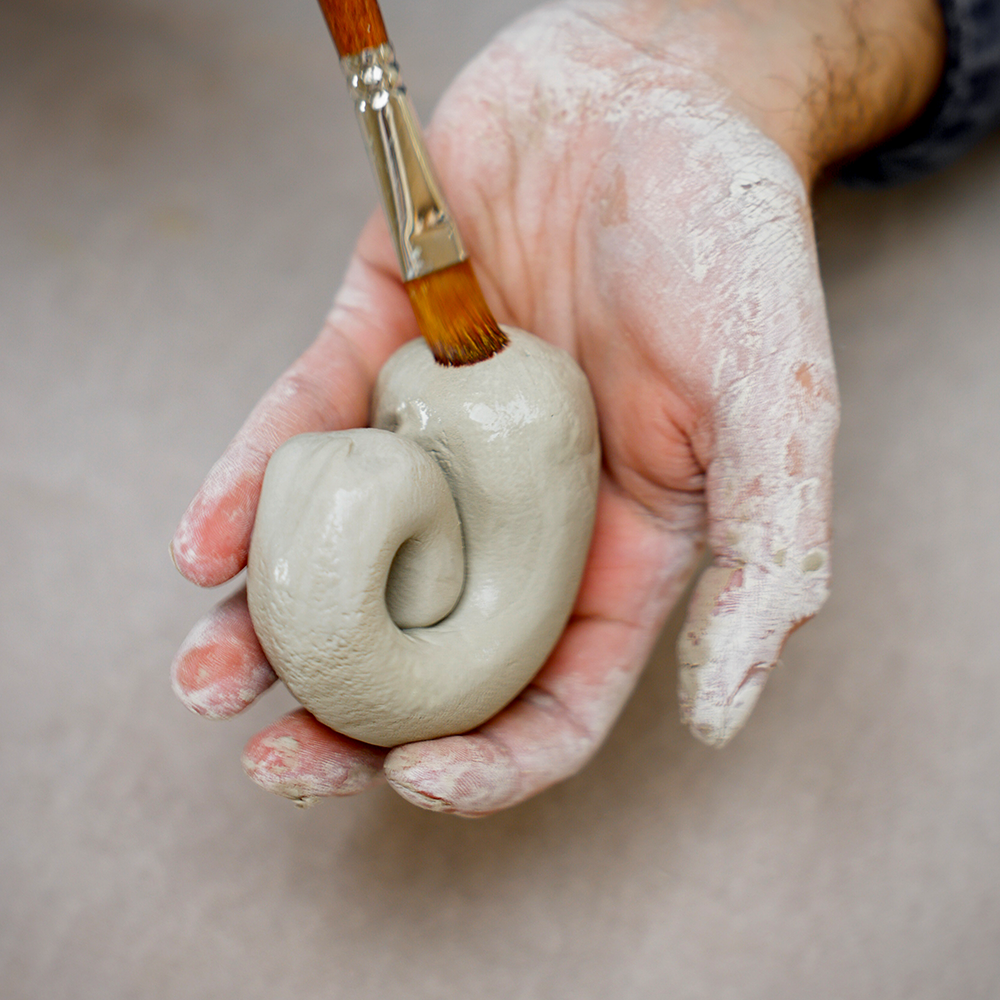
Ceramic Artists and Their Influence
Ceramic artists have played a significant role in the evolution of pottery.
From ancient artisans to modern studio potters, these artists have pushed the boundaries of what is considered pottery.
Their innovative techniques and creative designs have transformed pottery from a purely functional craft to a respected art form.
Pottery in Different Cultures
Pottery has been an integral part of many cultures around the world.
In ancient China, for example, the production of fine china and porcelain was a highly specialized craft.
The Ming Dynasty is particularly renowned for its exquisite porcelain wares.
Similarly, in Japan, the art of pottery is deeply rooted in tradition, with techniques like Raku and Satsuma being highly valued.
The Role of Pottery in Modern Times
In modern times, pottery continues to be a popular craft.
Many people take up pottery making as a hobby, finding it a relaxing and rewarding activity.
Pottery classes and workshops are widely available, allowing individuals to learn various pottery techniques and create their own ceramic wares.
The Science Behind Pottery
The science of pottery involves understanding the properties of different clay bodies and other materials used in ceramic production.
For example, the addition of feldspar minerals can affect the melting point of the clay, while silica carbide can enhance its strength.
Understanding these properties is essential for creating high-quality pottery.
Pottery and Sustainability
Pottery is also considered a sustainable craft.
Unlike plastic and other synthetic materials, clay is a natural, organic material that is abundant and biodegradable.
Additionally, many potters use eco-friendly practices, such as recycling clay scraps and using non-toxic glazes.
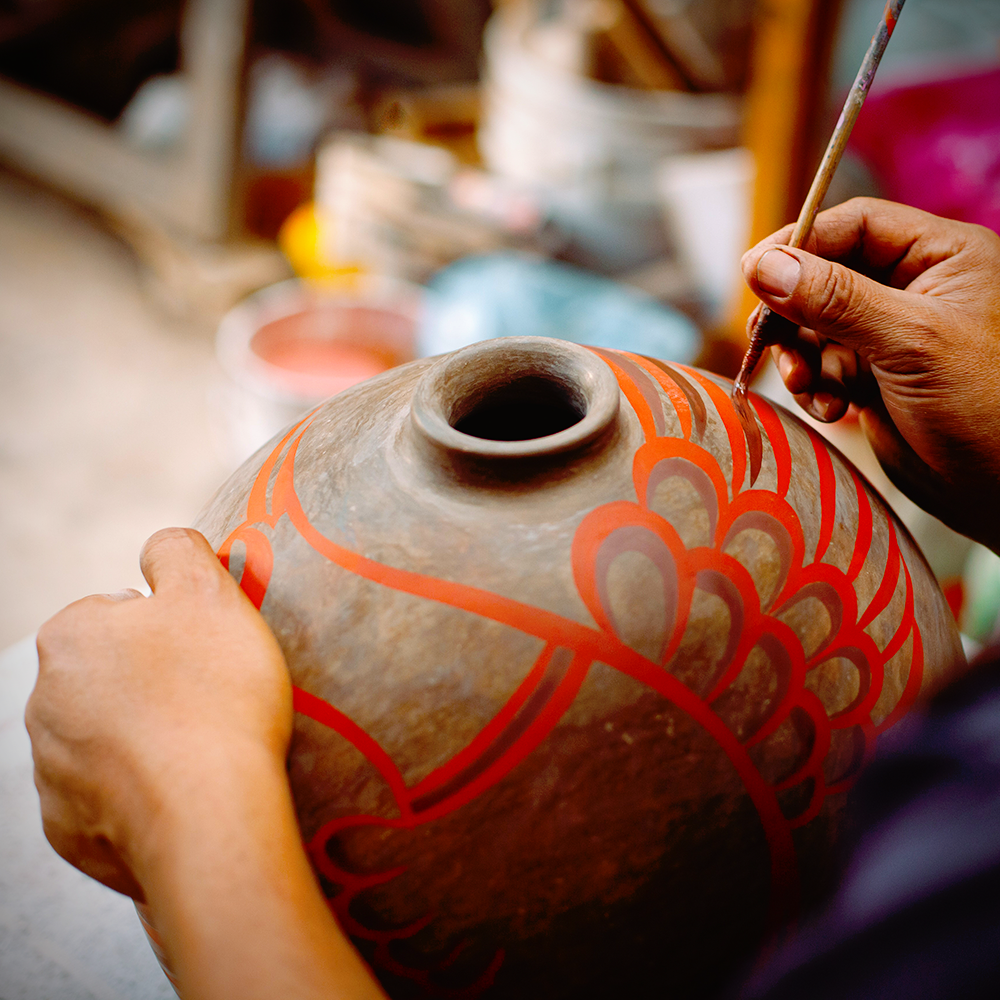
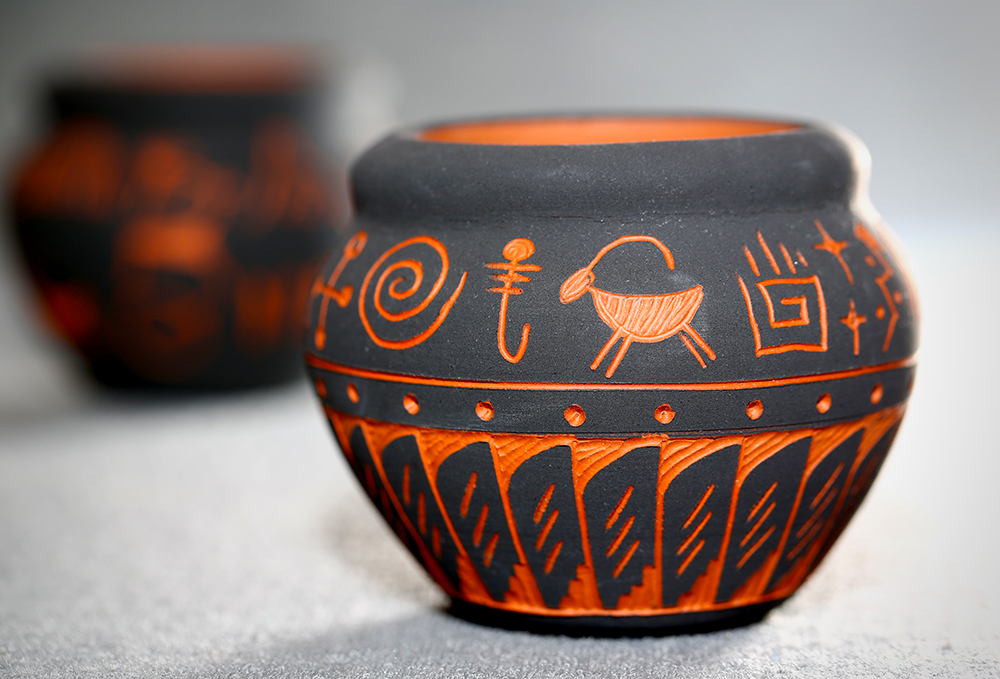
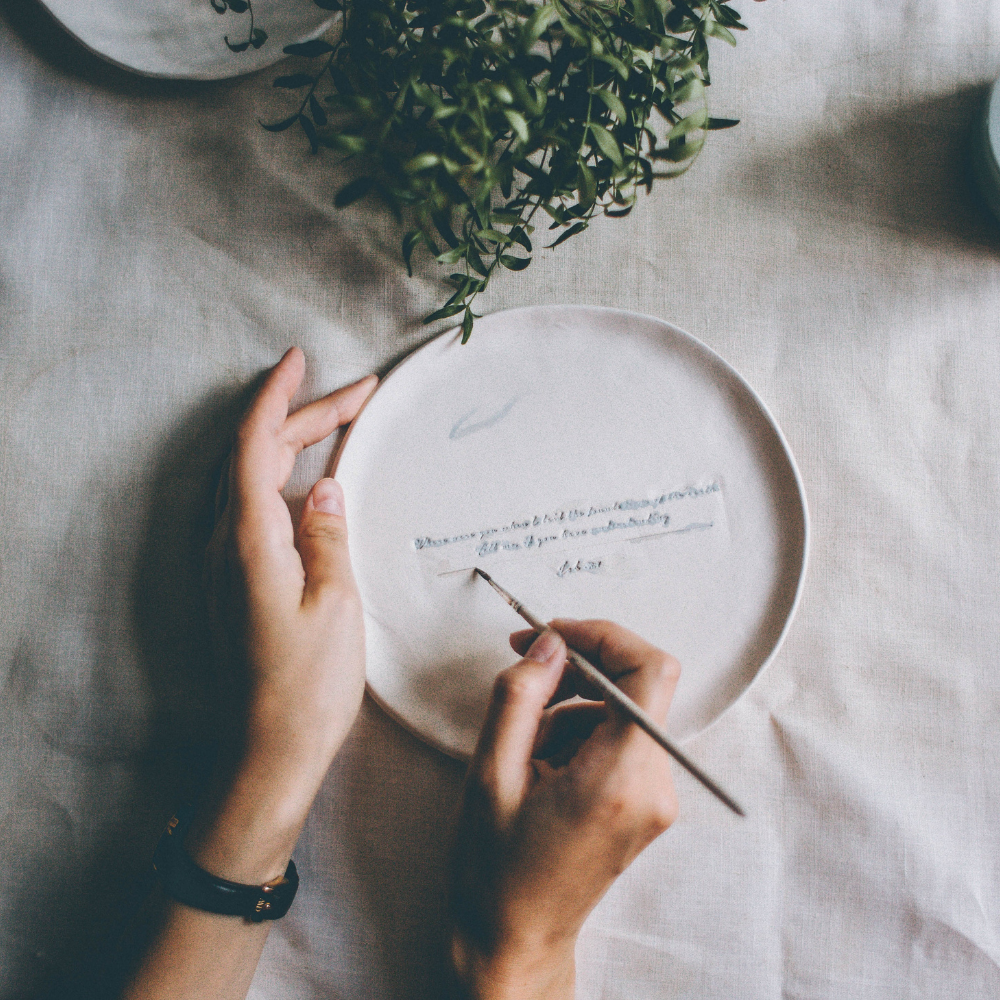
The Future of Pottery
The future of pottery looks promising, with advancements in technology and materials opening up new possibilities.
For example, 3D printing is being used to create intricate ceramic designs that would be difficult to achieve by hand.
Additionally, new types of clay and glaze materials are being developed, offering more options for potters.
Tips for Understanding & Appreciating Pottery
Pottery is more than just shaping clay; it's an art form that connects us to ancient traditions and modern creativity.
Whether you're a beginner or a seasoned potter, there's always something new to learn.
Dive into these ceramics tips to enhance your pottery skills and appreciation.
- Learn the Basics of Clay Types: Familiarize yourself with different types of clay, such as earthenware, stoneware, and porcelain. Each type has unique properties and uses, which can significantly impact your pottery projects.
- Explore Various Techniques: Pottery isn't just about wheel throwing. Try hand-building, slab construction, and coil building to expand your skills and find your preferred method.
- Understand Glazing and Firing: Glazing adds color and texture to your pottery, while firing hardens the clay. Learn about different glazes and firing techniques to achieve the desired finish for your pieces.
- Study Historical Pottery Styles: Gain inspiration from ancient pottery styles and techniques. Understanding the history of pottery can provide valuable insights into modern practices and help you appreciate the craft's evolution.
- Invest in Quality Tools: Good pottery tools can make a significant difference in your pottery experience. Invest in quality pottery wheels, kilns, and hand tools to enhance your craftsmanship.
- Join a Pottery Community: Connect with other pottery enthusiasts through classes, workshops, and online forums. Sharing experiences and tips can accelerate your learning and provide valuable support.
- Practice Patience and Persistence: Pottery requires time and practice to master. Be patient with yourself and persist through challenges. Each piece you create is a step towards improving your skills.
- Experiment with Different Styles: Don't be afraid to experiment with various styles and techniques. This experimentation can lead to unique creations and help you develop your artistic voice.
- Focus on Functionality and Aesthetics: Balance the functional aspects of your pottery with aesthetic appeal. Consider how your pieces will be used and strive to create items that are both beautiful and practical.
- Stay Updated with Trends and Innovations: Keep an eye on current trends and technological advancements in pottery. New materials and methods can offer exciting opportunities for your craft.
- By following these tips, you'll deepen your understanding and appreciation of pottery, enhancing both your skills and enjoyment of this timeless art form.
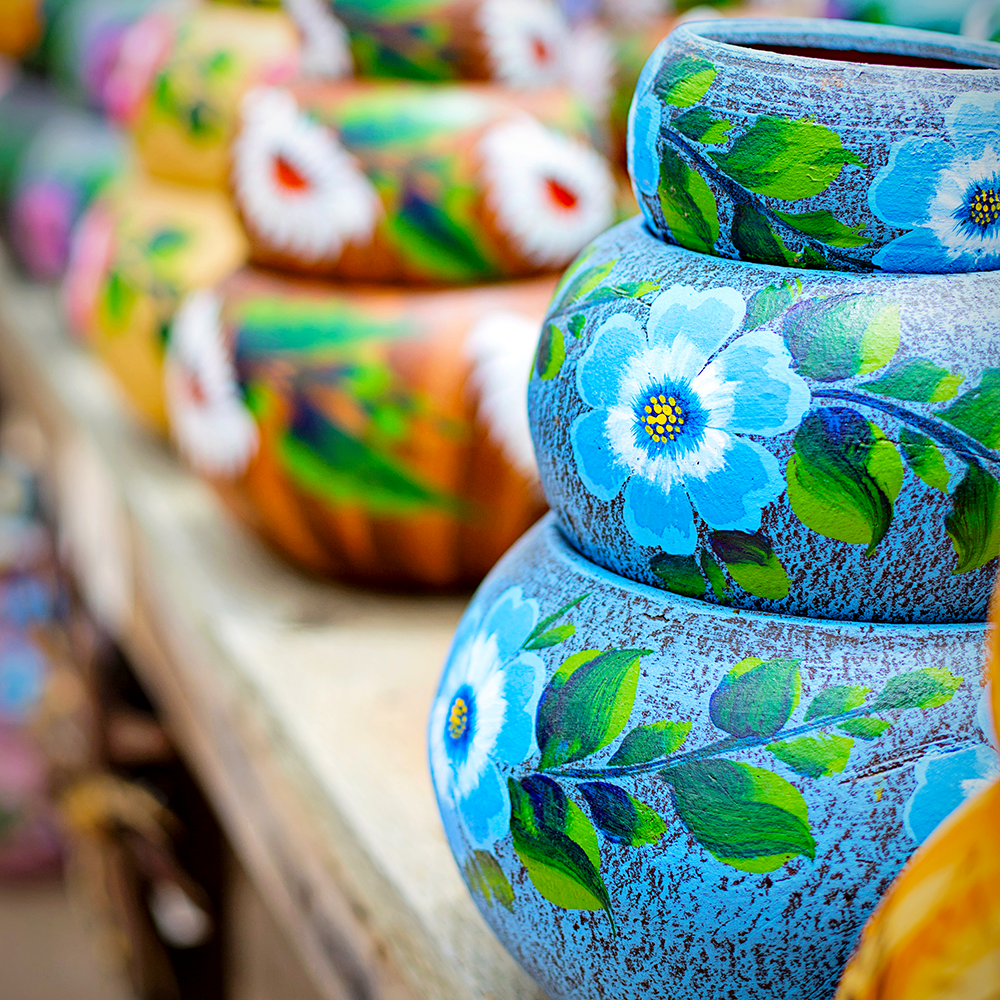
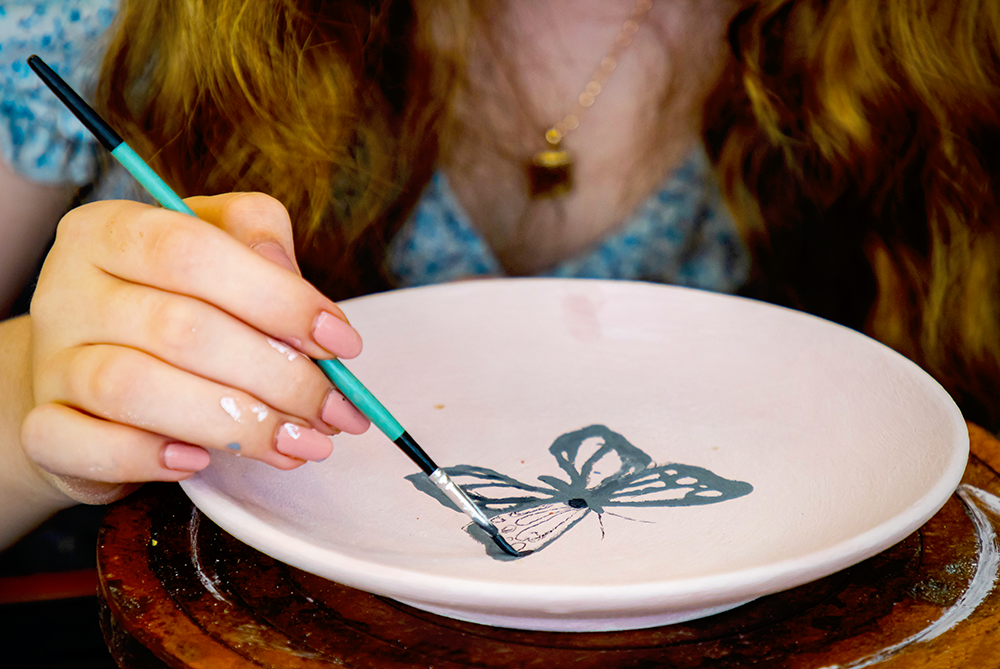
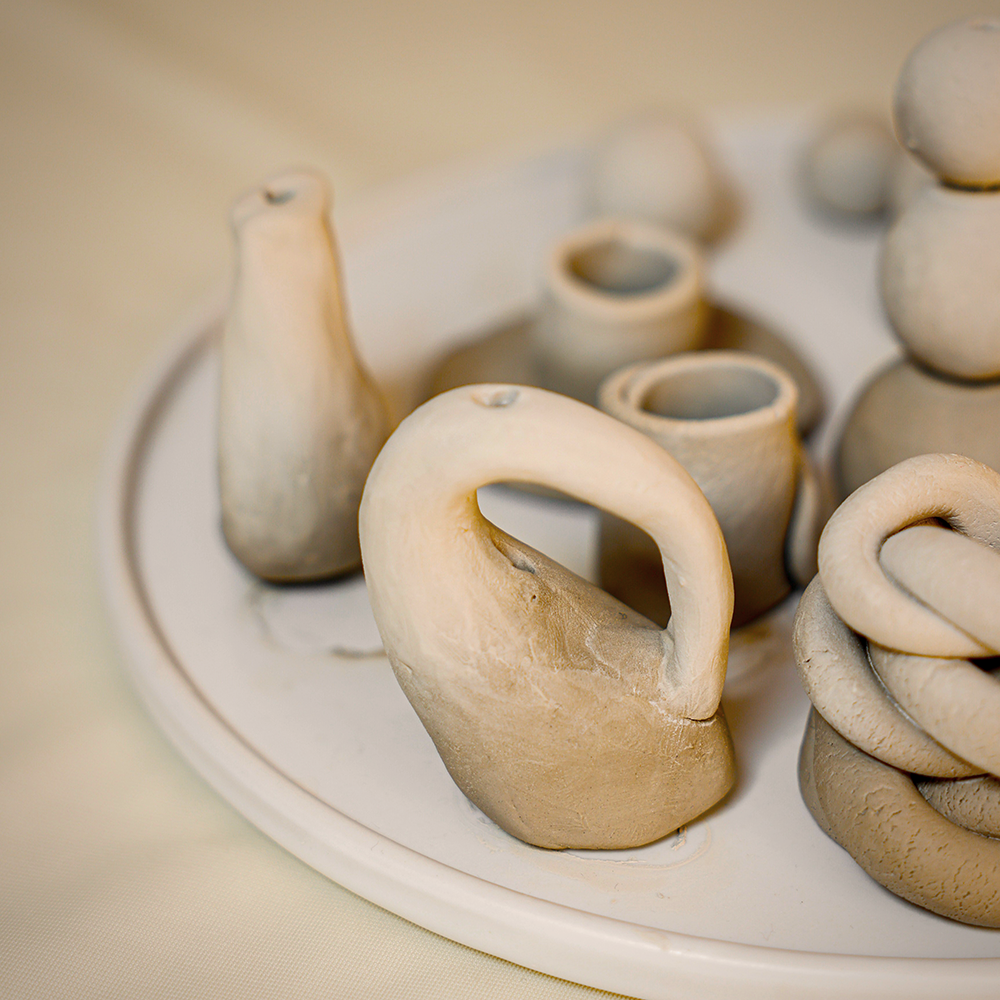
Embrace the Timeless Art of Pottery
Pottery, with its rich history and endless possibilities, remains a captivating and inspiring craft.
From ancient civilizations to modern-day artisans, this timeless art form has evolved while retaining its essence.
Modern pottery making involves various methods, such as wheel throwing and hand-building, and requires an understanding of the properties of different clay bodies and glaze materials.
Pottery continues to be a popular and sustainable craft, with advancements in technology and materials opening up new possibilities for the future.
Whether you're a seasoned ceramic artist or just beginning your journey, pottery offers a unique blend of creativity, tradition, and innovation.
Dive into the world of pottery and discover the joy of shaping and hardening clay into beautiful, functional, and decorative pieces.
With advancements in technology and materials, the future of pottery is brighter than ever, promising new horizons for this sustainable and beloved craft.
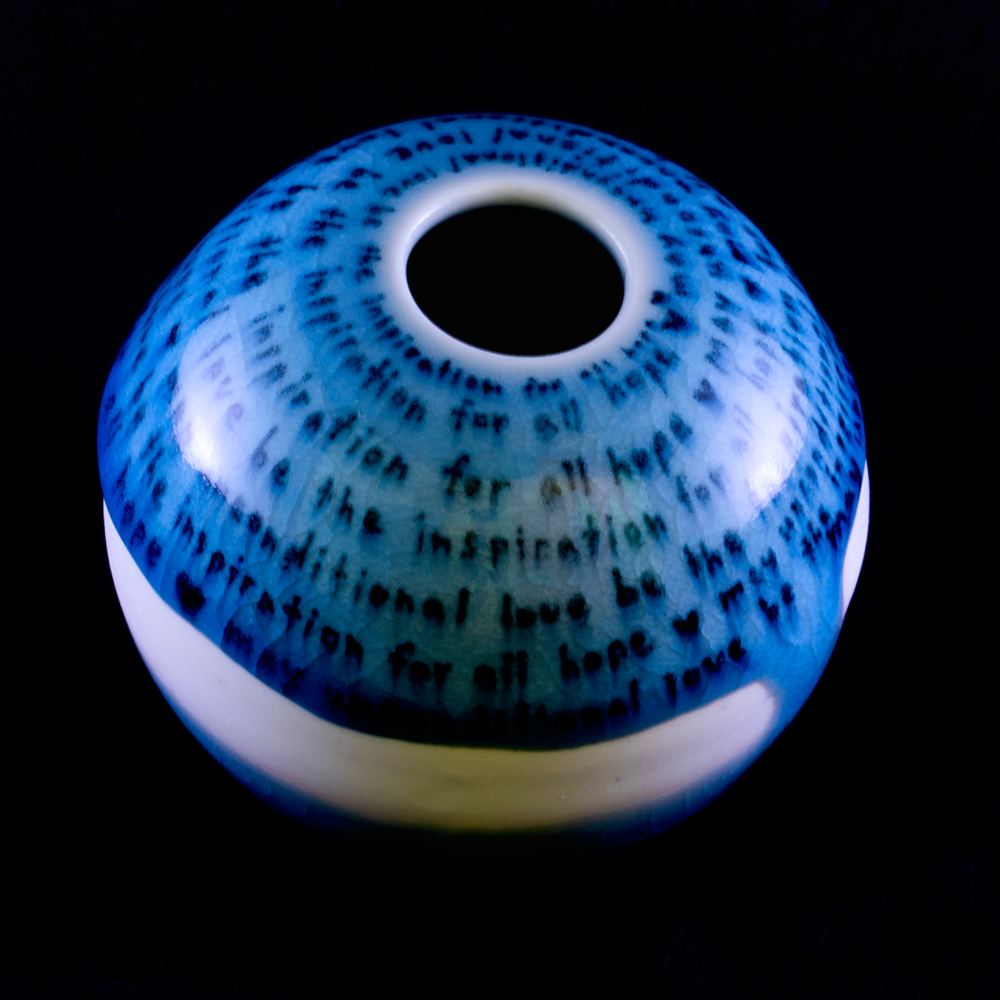
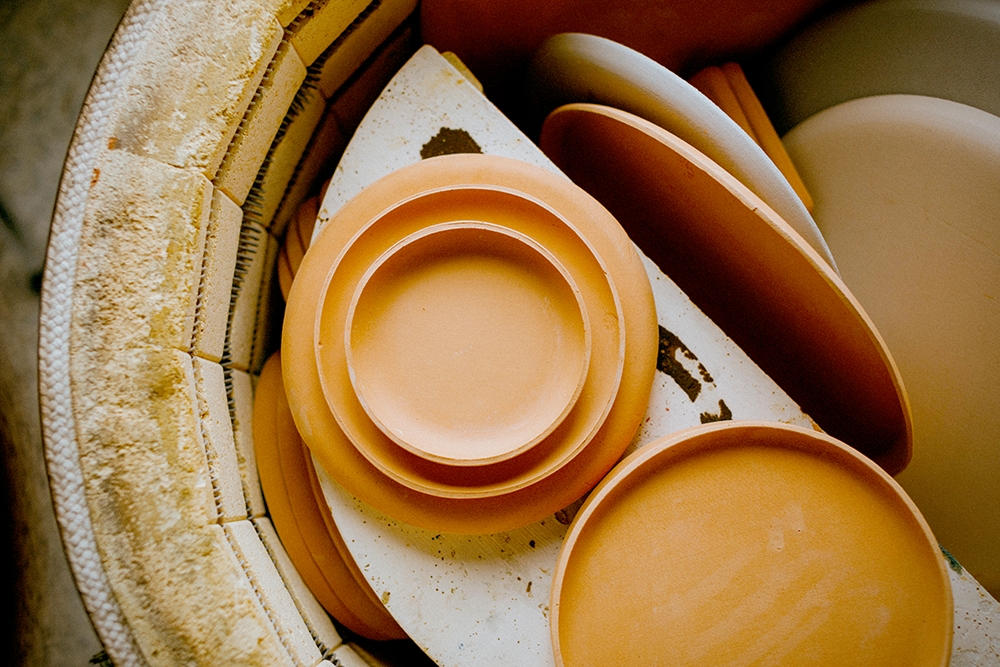
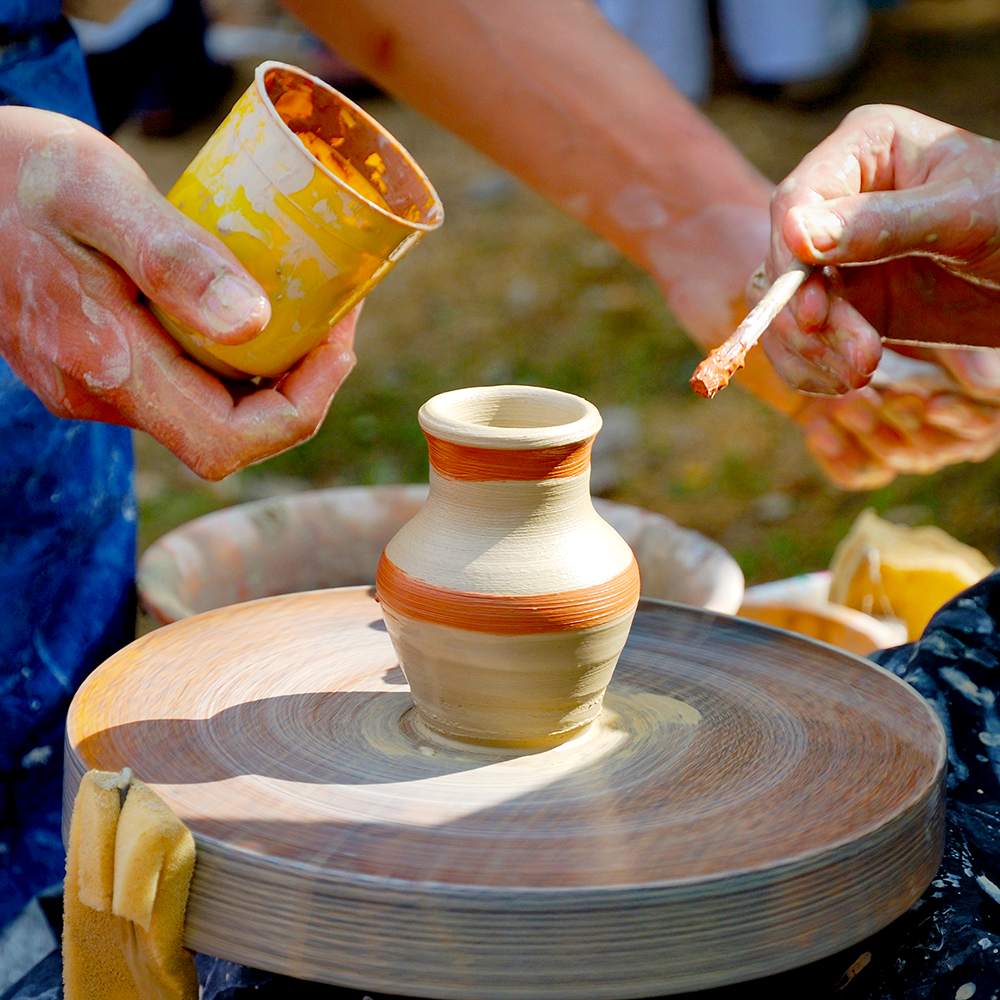
Pottery FAQs
Are you curious about the fascinating world of pottery?
Whether you're a seasoned ceramic artist or just starting to explore this timeless craft, this FAQ section is here to answer all your burning questions.
From understanding the differences between earthenware, stoneware, and porcelain to discovering various pottery techniques and tracing the evolution of pottery through the ages, we've got you covered.
Dive in and uncover the secrets behind this ancient art form!
What is the difference between earthenware, stoneware, and porcelain?
Earthenware is fired at low temperatures and is slightly porous, often requiring a glaze to make it non-porous. Stoneware is fired at higher temperatures, making it more durable and non-porous. Porcelain, also known as fine china, is made from a refined clay body and fired at very high temperatures, resulting in a translucent white ceramic that is both strong and delicate.
What are some common pottery techniques?
Common pottery techniques include wheel throwing, hand-building, and glazing. Wheel throwing involves shaping the clay on a potter's wheel, while hand-building involves shaping the clay by hand using methods like coiling, pinching, and slab building. Glazing involves applying a glaze material to the surface of the pottery to create a smooth, often glossy finish.
How has pottery evolved over time?
Pottery has evolved significantly over time, from the earliest forms of fired clay used for functional purposes to the sophisticated ceramic wares of today. Different cultures have contributed unique techniques and styles, and modern advancements in technology and materials have opened up new possibilities for pottery making.
How do I choose the right type of clay for my project?
Choosing the right type of clay depends on your project and the firing temperature. Earthenware clay is great for beginners and low-fire projects, while stoneware clay is more durable and suitable for functional ware. Porcelain clay is ideal for fine, delicate pieces but requires more skill to work with.
What tools do I need to start pottery?
To start pottery, you'll need basic tools like a potter's wheel (if you're wheel throwing), a variety of shaping tools (such as ribs, needles, and sponges), a kiln for firing, and glazes for finishing. Hand-building techniques require additional tools like rolling pins, molds, and cutting wires.
Can I make pottery at home?
Yes, you can make pottery at home! You'll need a dedicated space for your work, basic tools, and access to a kiln for firing. Many community centers and art studios offer kiln rentals if you don't have one at home.
What is the importance of wedging clay?
Wedging clay is crucial as it removes air bubbles, ensures a consistent texture, and aligns the clay particles. This process makes the clay easier to work with and reduces the risk of cracks or explosions during firing.
How do I prevent my pottery from cracking?
To prevent cracking, ensure your clay is well-wedged, dry your pieces slowly and evenly, and avoid sudden temperature changes during firing. Using the right type of clay and proper techniques also helps in minimizing cracks.
What is bisque firing?
Bisque firing is the first firing of pottery, which transforms the clay into a durable, semi-vitrified state. This process makes the pottery easier to handle and glaze without breaking.
What are underglazes and how are they used?
Underglazes are colored slips applied to pottery before glazing. They allow for detailed designs and patterns that remain visible under a clear or translucent glaze. Underglazes can be applied using brushes, sponges, or stencils.
Can I mix different types of clay?
Mixing different types of clay is generally not recommended as they have different firing temperatures and shrinkage rates. This can lead to issues like cracking or warping during firing.
What is the difference between oxidation and reduction firing?
Oxidation firing occurs in an oxygen-rich environment, typically in electric kilns, resulting in bright, consistent colors. Reduction firing, often done in gas kilns, reduces the oxygen level, creating unique, varied effects and deeper colors.
How do I glaze my pottery?
To glaze your pottery, first, bisque fire your piece. Then, apply the glaze using methods like dipping, brushing, or spraying. Allow the glaze to dry before firing the piece again to the appropriate temperature for the glaze used.
What is raku firing?
Raku firing is a low-temperature firing process that involves removing pottery from the kiln while it's still glowing hot and placing it in combustible materials like sawdust or newspaper. This creates unique, unpredictable surface effects and crackle patterns.
Can pottery be food-safe?
Yes, pottery can be food-safe if it's made with non-toxic, lead-free glazes and fired to the appropriate temperature. Always check that the glazes used are labeled as food-safe.
What is the significance of pottery in different cultures?
Pottery holds significant cultural value across the world. It has been used for functional, ceremonial, and artistic purposes. Different cultures have developed unique styles, techniques, and traditions that reflect their history and way of life.
How can I repair broken pottery?
Repairing broken pottery involves using special adhesives designed for ceramics, like ceramic glue. For valuable or sentimental pieces, consider consulting a professional restorer. Some techniques include using epoxy or kintsugi, the Japanese art of repairing with gold.
What are some tips for beginners in pottery?
For beginners, start with simple projects and basic techniques. Practice regularly, be patient, and don't be afraid to make mistakes. Joining a pottery class or community can provide valuable guidance and support.
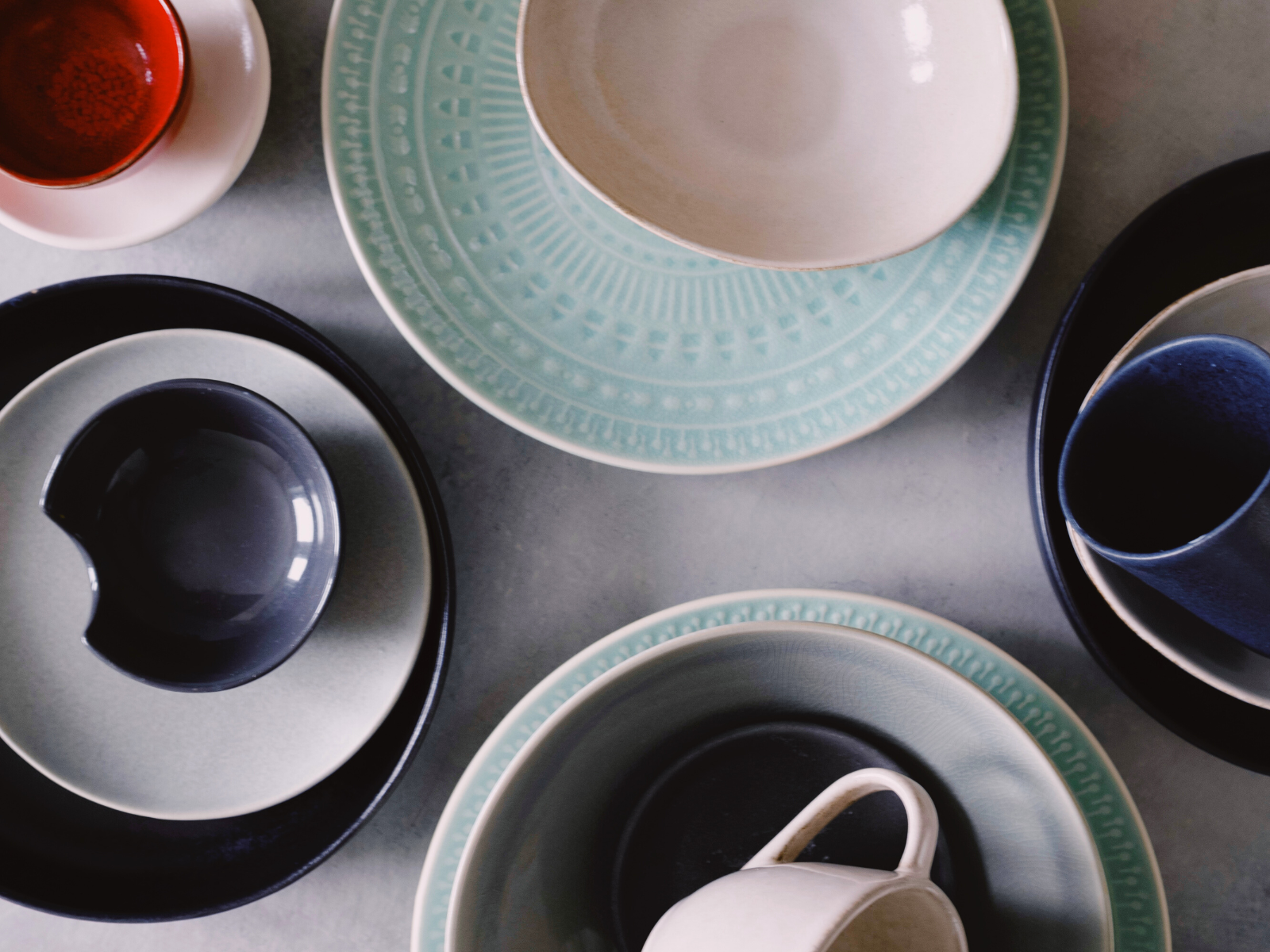
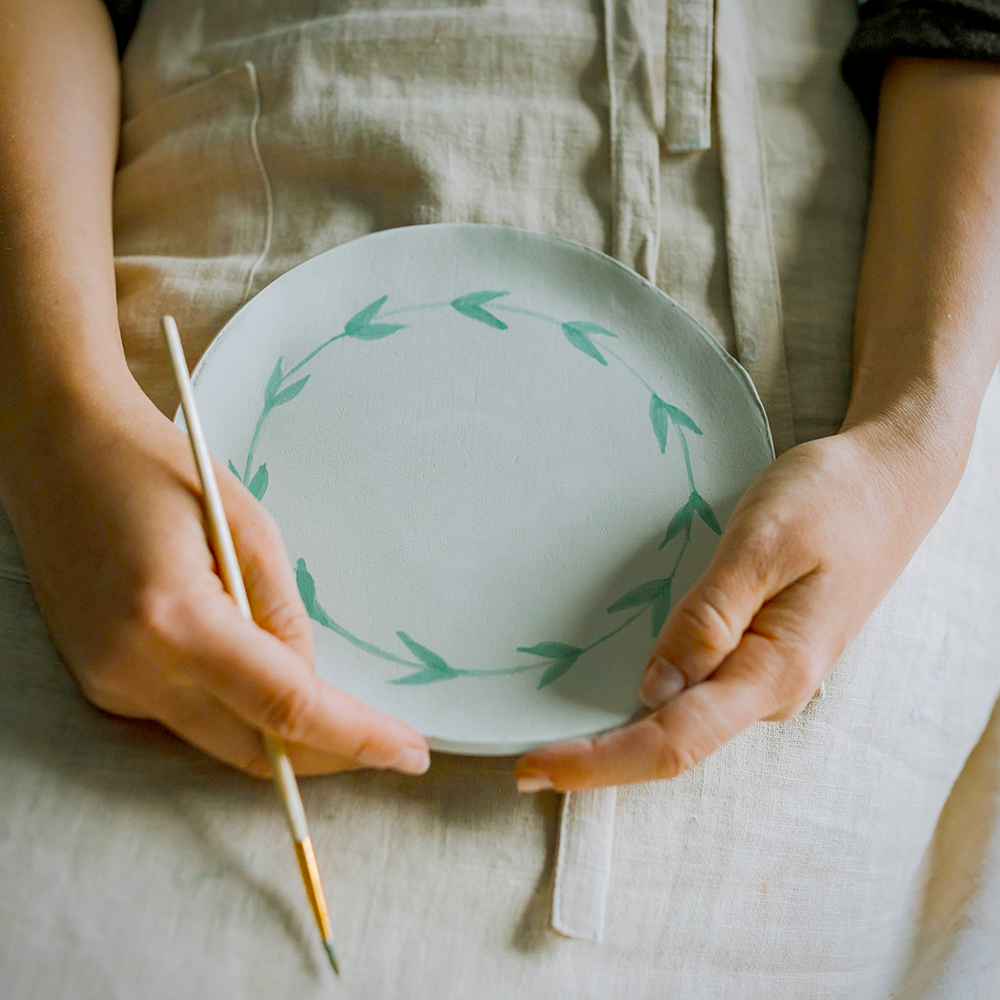
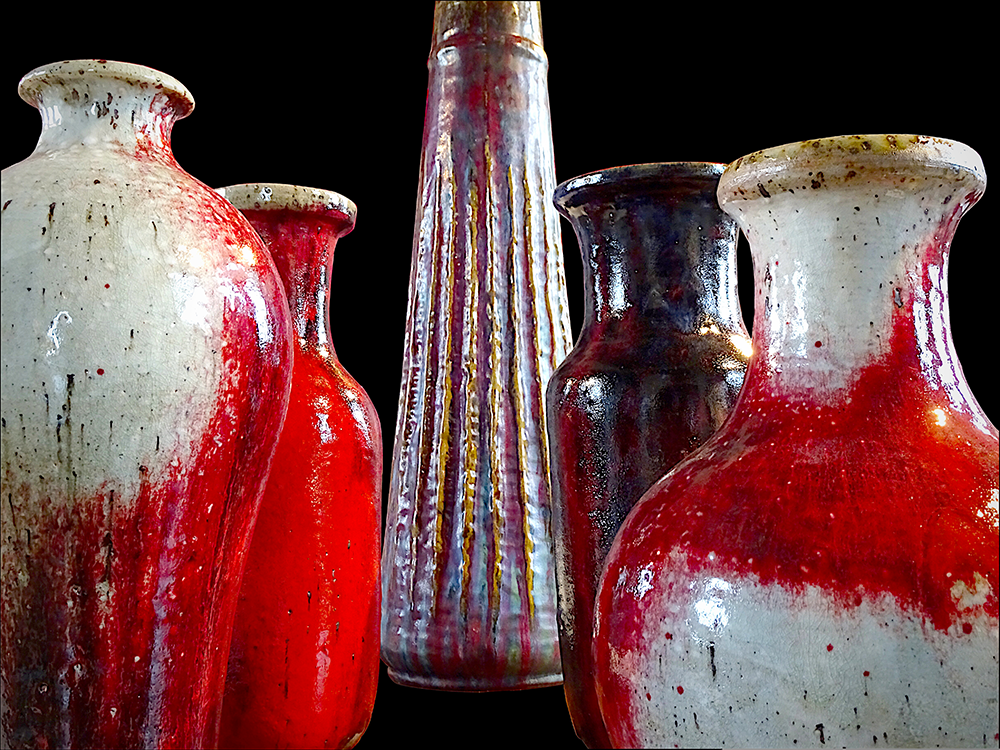
Eager to learn more about pottery and ceramics? Check out Heni Talks' video!
Want even more content about creativity and art?
Be sure to check out all of our creative chronicles!
Love pottery and working with clay?
Check out some of our other ceramic articles:
-What is the difference between ceramics and pottery?
-What are the four types of pottery?
-What are the 5 methods of working with clay?
-What is the difference between hand building and throwing clay?
